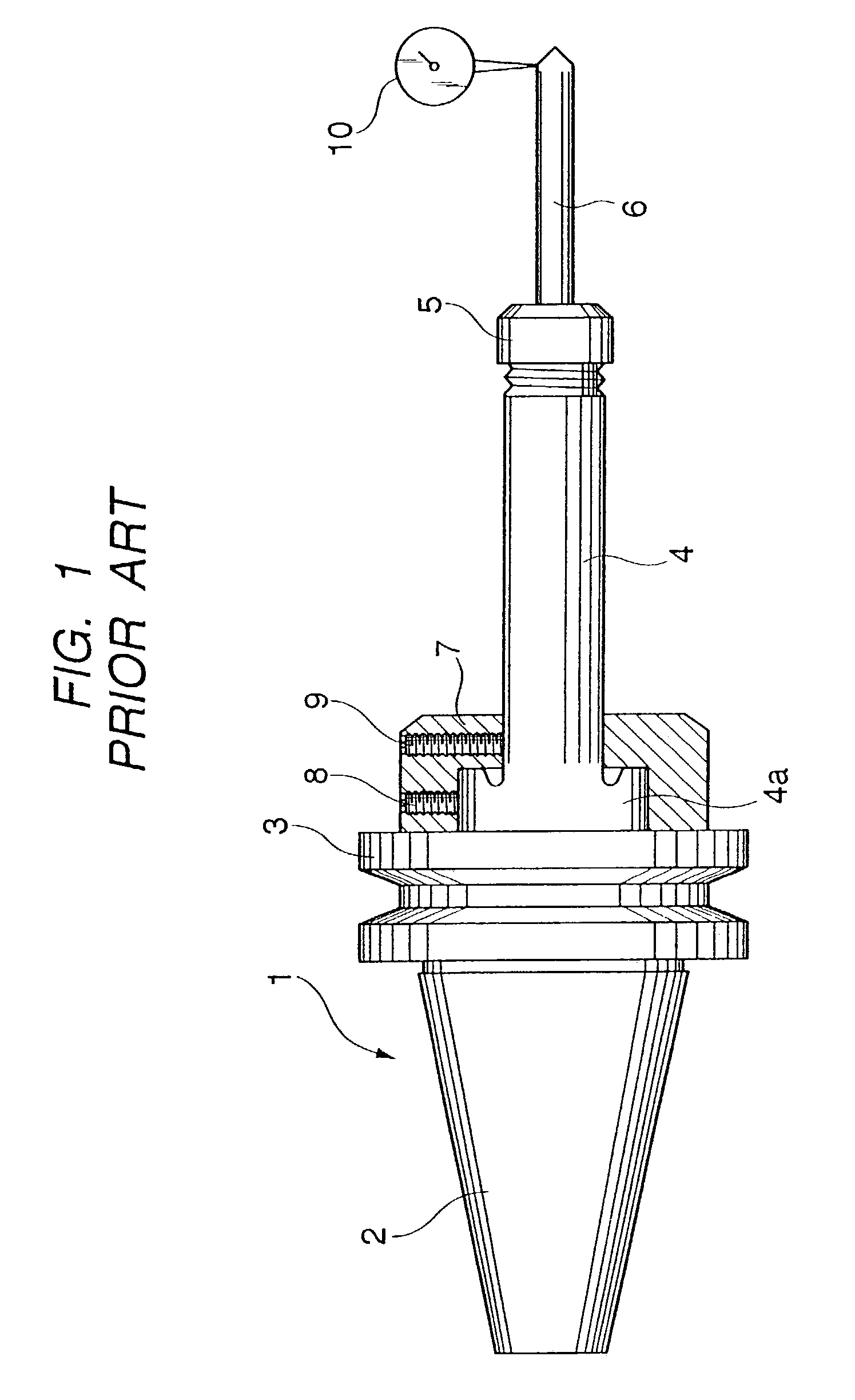Tool holder
a tool and tool head technology, applied in the field of tool head holders, can solve the problems of large force and difficulty in reducing the tip run-out of the tool, and achieve the effects of small force, high run-out accuracy, and easy correction of the tip run-out of the cutting tool
- Summary
- Abstract
- Description
- Claims
- Application Information
AI Technical Summary
Benefits of technology
Problems solved by technology
Method used
Image
Examples
first embodiment
[0072]In the above-described first embodiment, the base end portion 341 of the chuck sleeve 34, which is continuous with the cylindrical support portion 48, is elastically deformed in a radial direction in order to reduce the tip run-out of the cutting tool 29 to zero, through an operation of rotating the eccentric cam 43 provided in the ring member 42, which is fitted onto the cylindrical support portion 48 of the holder body 31, to thereby adjust the pressing force which the pin 44 applies to the rear end face 38a of the clamp sleeve 38. Therefore, the tip run-out of the cutting tool 29 can be corrected with small force, and high run-out accuracy can be maintained stably. In addition, the run-out correction mechanism can easily be applied to tool holders for cutting tools of large diameter.
second embodiment
[0073]Next, the present invention will be described with reference to FIGS. 6 and 7.
[0074]FIG. 6 is a longitudinal cross section of a tool holder equipped with a tip run-out correcting mechanism according to the second embodiment of the present invention; and FIG. 7 is an enlarged cross section of the tool holder of the second embodiment, taken along line 7—7 in FIG. 6.
[0075]As shown in FIG. 6, a tool holder 50 for holding a cutting tool 29 such as a drill or a burnishing reamer has a holder body 51. The holder body 51 includes a taper shank portion 52 to be attached to a main spindle of an unillustrated machine tool; a flange portion 53, which is formed at an end of the shank portion 52 and whose center axis is aligned with that of the shank portion 52; an arbor 54, which is formed integrally with the flange portion 53 in such a manner that the arbor 54 extends from an end of the flange portion 53 opposite the shank portion 52, and its center axis is aligned with that of the flange...
third embodiment
[0087]Next, the present invention will be described.
[0088]FIG. 8 is a longitudinal cross section of a tool holder equipped with a tip run-out correcting mechanism according to the third embodiment of the present invention; FIG. 9 is an enlarged cross section of the tool holder of the third embodiment, taken along line 9—9 in FIG. 8; FIG. 10A is an enlarged view of a cam and a steel ball for run-out correction, which are used in the tip run-out correcting mechanism of the third embodiment; and FIG. 10B is an enlarged cross section taken along line 10B—10B in FIG. 10A.
[0089]In FIGS. 8 and 9, structural elements identical with those shown in FIGS. 3 and 4 are denoted by the same reference numerals, and their repeated descriptions are omitted. Portions different from those of in FIGS. 3 and 4 will mainly be described.
[0090]The tool holder shown in FIGS. 8 and 9 differs from the tool holder shown in FIGS. 3 and 4 in that the tool holder shown in FIGS. 8 and 9 has a different tip run-out ...
PUM
| Property | Measurement | Unit |
|---|---|---|
| force | aaaaa | aaaaa |
| radial elastic deformation | aaaaa | aaaaa |
| radial bending deformation | aaaaa | aaaaa |
Abstract
Description
Claims
Application Information
 Login to View More
Login to View More - R&D
- Intellectual Property
- Life Sciences
- Materials
- Tech Scout
- Unparalleled Data Quality
- Higher Quality Content
- 60% Fewer Hallucinations
Browse by: Latest US Patents, China's latest patents, Technical Efficacy Thesaurus, Application Domain, Technology Topic, Popular Technical Reports.
© 2025 PatSnap. All rights reserved.Legal|Privacy policy|Modern Slavery Act Transparency Statement|Sitemap|About US| Contact US: help@patsnap.com



